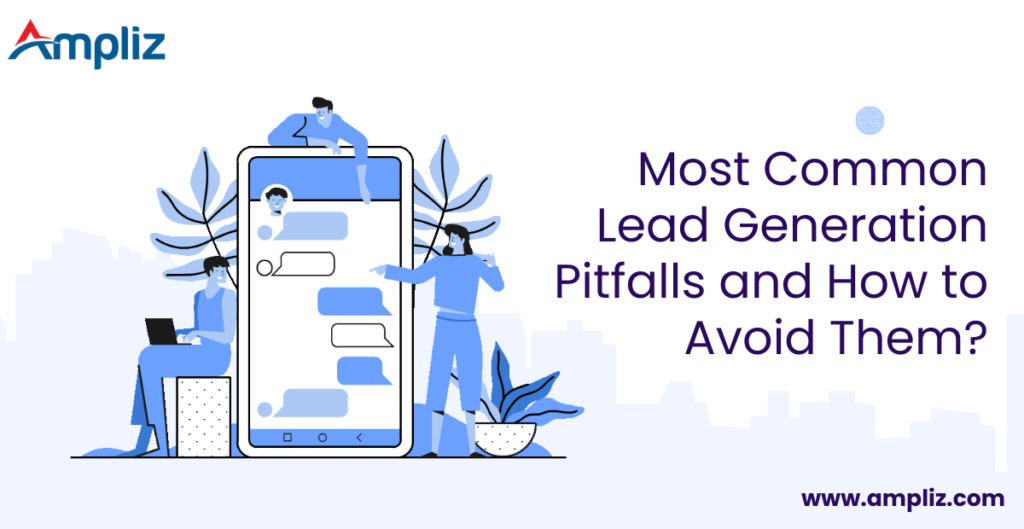Lead generation is the lifeblood of any business. The term “lead generation” is almost purposely designed to sound intimidating, or more technical than it really is, but what it essentially means is just the process of attracting and converting strangers into your customers. It is, essentially, a form of marketing that focuses on driving interest in your products or services.
Lead generation involves a variety of tactics, such as using SEO optimization for your website to drive organic traffic from search engines or running targeted ads on social media platforms like Facebook and Instagram. You can also use email marketing campaigns, content marketing strategies, and even direct mail campaigns to generate leads.
Once you have attracted potential customers with these strategies, it’s important to engage them with compelling offers and promotions that will help convert them into paying customers. Unfortunately, a lot of businesses struggle with lead generation and fall into some common traps.
In the below article, we’re going to explore 12 of the most common lead generation pitfalls and how to avoid them.
Most Common 10 Lead Generation Pitfalls
Not having the right communication tech in place to capture the most leads
A lot of businesses rely on antiquated communication technologies to capture leads, such as email forms or contact forms on their websites. While these methods are effective in some cases, they can be quite limiting when it comes to capturing higher-quality leads.
The more advanced lead capture tools available today enable you to collect more data about each potential customer and use that information to qualify them better. Additionally, these tools can provide automated follow-up messages so that you don’t have to manually manage every lead.
What’s more, plenty of businesses have forgotten the power of more traditional tech like the telephone nd the importance of managing average hold time in call center. The rush to AI and to automation has led many marketers to forget the value of a real-time phone call. When used well, and especially in the era of internet-based virtual calling, it can be an incredibly powerful way to capture quality leads and convert them into customers.
Focusing Solely on Quantity Rather than Quality
When it comes to lead generation, a lot of businesses focus solely on the number of leads they generate rather than the quality. While it may seem like generating more leads will inherently result in more sales, that isn’t always the case.
Leads should be qualified based on certain criteria prior to engaging with them further. If you’re attracting too many low-quality leads, your time and resources will be wasted. It’s important to have a filter process for evaluating leads and determining whether or not they are worth pursuing.
Not Having a Systematic Approach
Without an effective lead generation system in place, you won’t be able to effectively manage and nurture leads. It’s important to have a plan for each lead and what you want to accomplish with them, from the initial contact to the close of the deal.
Having an organized approach will also enable you to scale your efforts more efficiently so that you can maximize the return on investment of your lead generation campaigns.
Not Tracking and Analyzing Results
It’s important to track the results of your lead generation campaigns in order to identify areas that need improvement. Without tracking data, it can be difficult to determine which tactics are working and which ones aren’t.
Analytics software can help you track metrics such as website traffic, click-through rates, conversion rates, cost per lead, and more. By analyzing these metrics over time, you will be able to identify patterns in customer behavior and optimize your campaigns accordingly. Finally, if your lead-generation efforts include paid advertising, paid search intelligence software will help you track the performance of your competitors’ campaigns to adjust and optimize for maximum performance.
Not Setting Clear Goals
Lead generation campaigns should always have a clear goal in mind. Are you looking to generate leads for sales or marketing purposes? Or are you looking to build brand awareness and loyalty?
Once you have identified your goals, it’s important to set measurable targets so that you can track progress over time. Additionally, setting a budget will help ensure that your lead generation efforts don’t end up costing more than they bring in.
Relying Too Heavily on Short-Term Tactics
Many businesses rely too heavily on short-term tactics such as discounts and flash sales instead of investing their resources into long-term strategies that can yield higher quality leads. While these types of tactics can be beneficial for lead generation in the short-term, they will not result in sustainable growth over time.
It’s important to invest your resources into building long-term relationships with customers through content marketing, email campaigns, and social media outreach. These types of strategies can help you build trust and loyalty that will keep leads coming back to purchase again and again.
Not Investing in the Right Technology
If you’re relying on outdated lead generation technology, it’s unlikely that you will be able to keep up with your competitors. Investing in the right tools can help make sure that you have access to the most up-to-date data and insights about customer behaviour so that you can optimize your campaigns and maximize ROI.
Lead generation technology isn’t just limited to CRMs and analytics software; there are a variety of technologies, such as chatbots, interactive content, and marketing automation platforms that can help automate mundane tasks and create more engaging experiences for customers.
For example, Crisp (a popular HelpScout alternative) can greatly aid in lead generation by engaging in personalized conversations with website visitors, collecting contact information, and nurturing leads through automated messaging. While it may not possess the persuasive sales techniques of a human, it offers a cost-effective solution for scaling up your lead generation efforts efficiently.
Not taking advantage of referral programs
Referral programs are a great way to generate leads through word-of-mouth marketing. By offering incentives for customers who refer others, you can encourage current customers to spread the word about your business and bring in more potential leads.
However, many businesses fail to take full advantage of referral programs due to a lack of resources or time. Consider investing in automated referral software that will manage all aspects of your program so that you don’t have to devote too much time and energy on it.
Failing to Use Multiple Channels
It’s important to have an omnichannel approach when it comes to lead generation. Don’t just focus on one channel such as email or social media – have a presence on various platforms so that you can reach more potential leads.
Expanding your reach across multiple channels like Facebook, Instagram, and LinkedIn allows you to tap into diverse audiences and engage with them in ways that resonate. For instance, leveraging strategies to increase Instagram followers can significantly broaden your brand’s visibility and enhance your social media presence. By establishing a robust presence across these platforms, you can create a cohesive brand image and interact with potential leads at different touchpoints throughout their customer journey.
By diversifying your efforts, you will be able to capture more leads and convert them into customers at a higher rate. Additionally, having multiple channels allows you to track customer behavior across different platforms and make adjustments accordingly.
What this means is that you don’t just need to rely on one lead generation tool, but rather use a combination of tactics and strategies in order to achieve your goals. By making sure that all of the pieces fit together, you can get the most out of every campaign and generate more leads with less effort.
Not Taking Action
Finally, the most common pitfall in lead generation is not taking action. Even if you’re generating plenty of leads with high-quality data, it won’t do much good if you don’t follow up with them in a timely manner. It’s important to establish an effective follow-up process and respond quickly to inquiries in order to maximize conversions.
It’s always surprising how many companies put all of this work into generating leads, but don’t have the resources to follow up on them. Investing in automation and marketing tools can help make this process much easier and faster, allowing you to get more out of your lead-generation efforts.
Conclusion
Lead generation is an essential process for any business looking to grow and succeed. However, as with anything else, there are certain pitfalls that should be avoided in order to maximize return on investment.
By taking the time to address each of these common mistakes, businesses can ensure their lead-generation efforts are successful and productive. With the right strategies and technologies in place, businesses can take full advantage of their lead-generation campaigns and turn leads into loyal customers.
This means more targeted marketing, better return on ad spend and a steadier stream of conversions.




